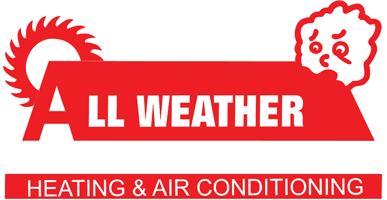As the weather is cooling off, you may be wondering about how you’ll make the most of your heating and cooling. After all, HVAC bills routinely make up a significant piece of your monthly electric bill. To try and find ways to save, some owners look closer at their thermostat. Is there a setting they should use to improve efficiency?
The majority of thermostats have a ‘Fan’ or ‘Fan On’ setting. But if the fan is running during a normal cycle, what does the fan setting provide for your HVAC system? This guide can help. We’ll walk through precisely what the fan setting is and whether you can use it to cut costs in the summer or winter.
What Is the Fan Setting on My Thermostat?
For most thermostats, the fan setting means that the system’s blower fan remains on. A few furnaces will generate heat at a low level in this setting, but in general heating or cooling isn’t being produced. The ‘Auto’ setting, in contrast, will start the fan over a heating or cooling cycle and switch it off after the cycle is complete.
There are advantages and disadvantages to using the fan setting on your thermostat, and whether you do or don’t {will|can|should]] depend on your personal comfort preferences.
Advantages to using the Fan/On setting:
- You can keep the temperature throughout your home more consistent by allowing the fan to keep generating airflow.
- Indoor air quality should improve because steady airflow will keep passing airborne contaminants through the air filter.
- Fewer start-stop cycles for the blower fan helps lengthen its life span. Because the air handler is usually a component of the furnace, this means you can prevent the need for furnace repair.
Drawbacks to switching to the Fan/On setting:
- A nonstop fan could increase your energy bills slightly.
- Constant airflow may clog your air filter in a shorter amount of time, increasing the frequency you will want to replace it.
{Choosing Between|Should My Thermostat Be on|Which Setting for My Thermostat? Fan or Auto in Summer/Winter
Through the summer, warm air will sometimes linger in unfinished spaces such as the attic or an attached garage. If you leave the fan on, your HVAC system may gradually move this warm air into the rest of your home, compelling the HVAC system to run longer to preserve the preferred temperature. In severe heat, this may result in needing AC repair more regularly as wear and tear gets worse.
The reverse can happen in the winter. Cooler spaces such as a basement will hold onto cooler air, which will eventually make its way into the rest of your home. Leaving the fan running could draw more cold air upward, increasing the amount of heating you need to keep warm.
If you’re still trying to figure out if you should switch to the fan/on setting, don’t forget that every home and family’s comfort needs are not the same. Leaving the HVAC system’s fan on may work for you if:
Someone in your household suffers from allergies. Allergies and similar respiratory conditions can be stressful on the family. Leaving the fan on is more likely to improve indoor air quality, helping your family breathe easier.
Your home experiences hot and cold spots. Lots of homes deal with difficult hot and cold spots that quickly return to a temperature different from the rest of the house. The fan setting should help limit these changes by steadily refreshing each room’s airflow.
